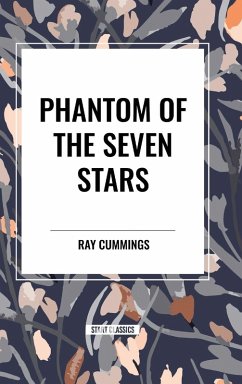
Phantom of the Seven Stars
Versandkostenfrei!
Versandfertig in 1-2 Wochen
16,99 €
inkl. MwSt.
Weitere Ausgaben:

PAYBACK Punkte
8 °P sammeln!
Lovely Brenda Carson, scholarly Jerome, pompous Livingston ... everyone aboard the Seven Stars scoffed at the idea of a Phantom Pirate. But I.P. agent Jim Fanning didn't laugh. He knew the luxury-liner's innocent looking cargo was already marked for plunder. Ray Cummings was one of the founding fathers of science fiction genre. He was the author of The Girl in the Golden Atom. His short stories appeared in Astounding, Planet Stories, and Argosy.














